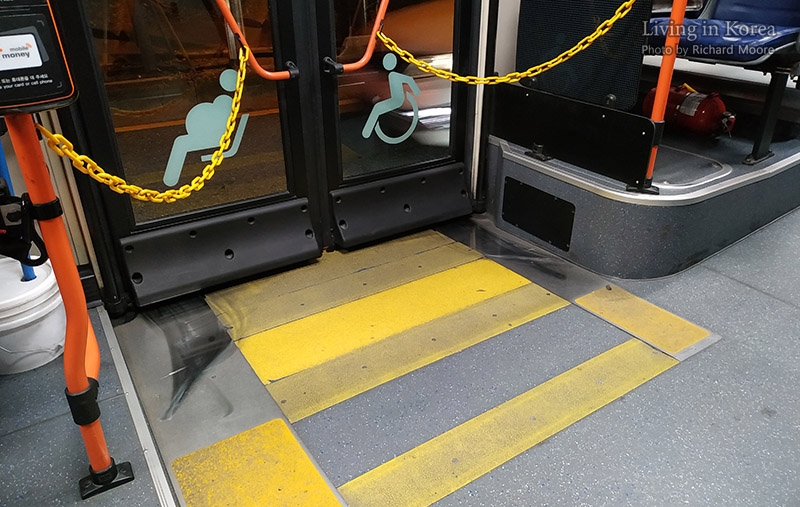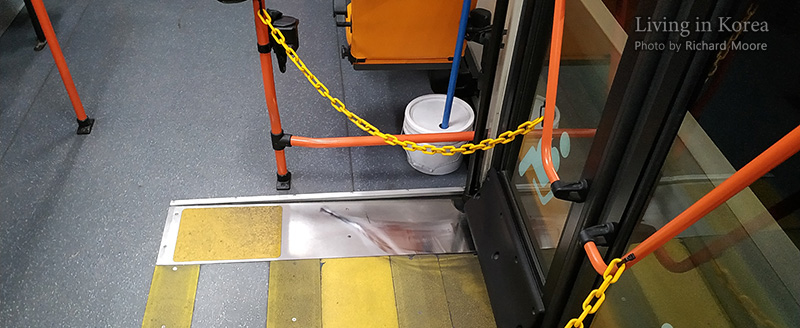In order to clearly tell the driver you wish to exit the bus, you’ll need to press one of these red buttons placed throughout the bus. This is a very standardized item used in a number of cities, if not the entire country. They are installed on walls, between windows, and sometimes on the ceiling.
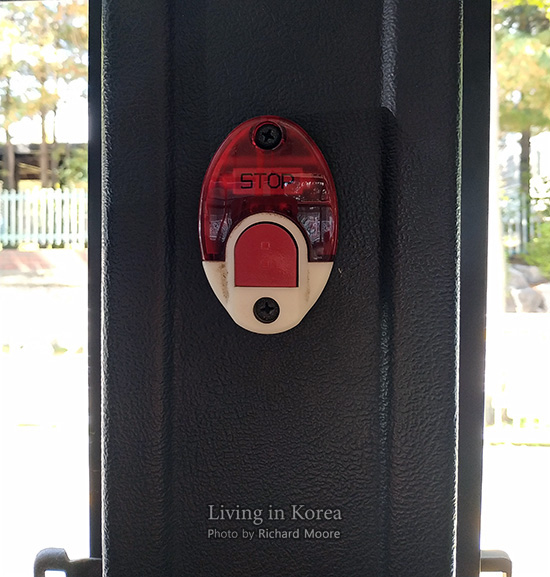
When one of these are pressed, a buzzer sound will go off in the driver’s area which tells the driver and also other passengers that the bus should stop at the next stop and the exit door will open. The left image shows when the button has not been pushed. The right images shows how the button partially lights up when pushed. When one of these is pushed, all of the buttons will light up throughout the bus. The first set of images is the most common type at time of writing while the second set of images is the newer style.


Here is one located on the ceiling of a bus. While these can be super helpful if crammed in a bus during rush hour, they sometimes are installed and sometimes aren’t. If installed, don’t expect to find more than one which limits their usability.
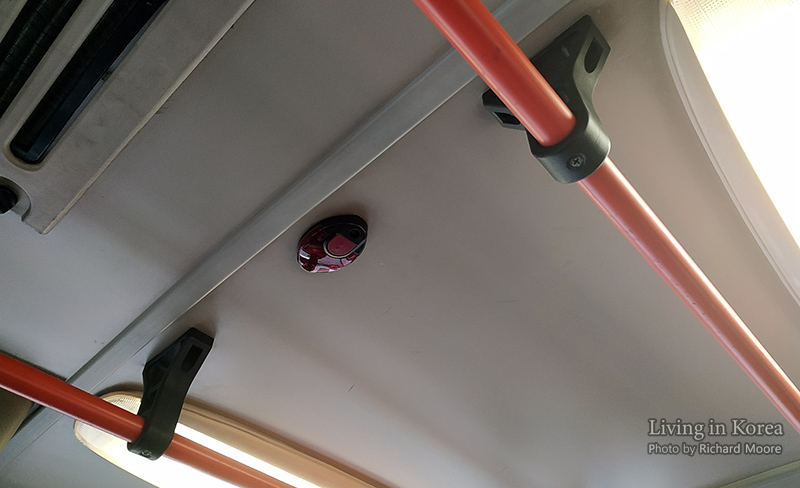
This is the other style of button and seems to be installed solely on poles by the exit door. These do not light up.
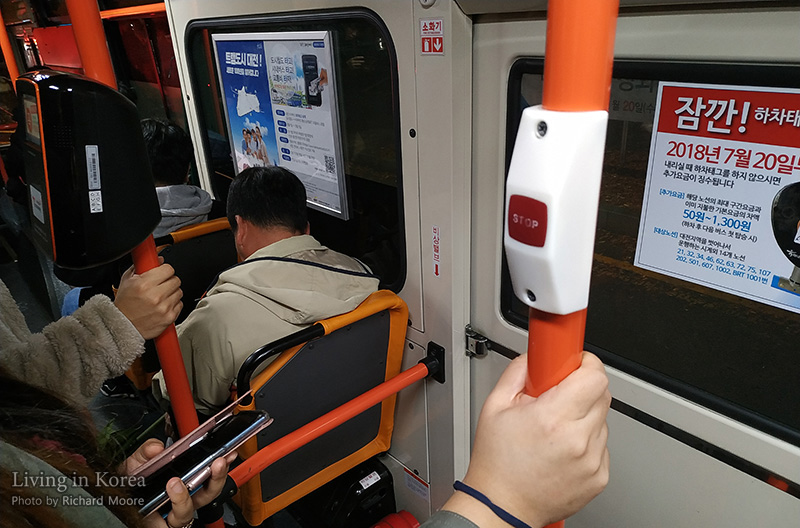
If you have pushed the button and the driver stops the bus but the door does not open, you’ll need to remind the driver you need to exit here. There are two simple sentences you can say. The first is 세워주세요 (sewojuseyo) which means more “Please stop (as I wish to exit).” The other sentence is 내릴 거예요 (aeril geoyeyo) which means “I am going to exit (so please open the door).”
If you used a transport card when you entered the bus, you should scan your card on the way out. Everyone pays the same starting rate and some riders will need to pay a little more on their way out based on the distance that they went. This is the same as using the subway. If you don’t scan your card when you exit the bus, the system thinks you might be trying to avoid paying for the distance you rode beyond the basic rate and therefore might charge you a fee to encourage riders to scan on entry and exit.
The transport card scanner at the exit of the bus is the same design as at the front of the bus, meaning they could be used interchangeably but this is discouraged as they want people to use the front door as an entrance and the side door as exit only.
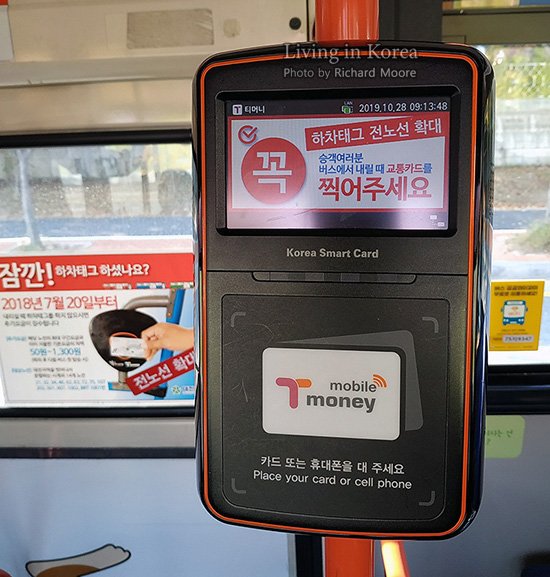
Here is a debit card with transport ability added to it. The top line of the card reader mentions how much more has been removed and the bottom line shows how much has been removed so far this billing period.
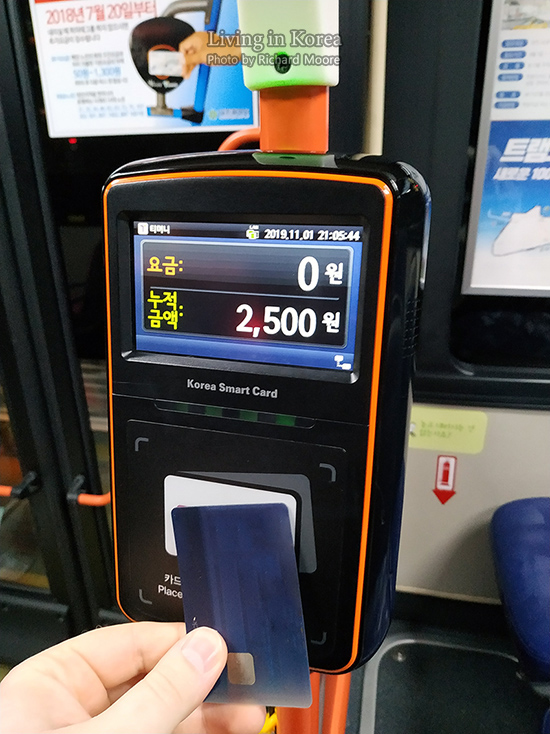
When you scan on your card on exit, you’ll hear a voice either saying 하차입니다 (下車입니다, hacha imnida) which means your paid successfully. If you hear 카드를 다시 대주세요 (kadeureul dasi daejuseyo), then you need to scan the card again and might need to remove it from your wallet for it to properly scan. If you removed the card from the wallet and it still isn't working, the most common issue will be inadequate balance.
Not every city is big enough to warrant instituting a distance-based payment system meaning all riders simply pay the same rate regardless of how long they ride the bus. Daejeon used to fall into this category but later decided they wanted people to scan their card on exit in order to get fuller transport data for the riders. Here is a sign telling people of this change and encouraging them to scan on exit. If you want a closer look, click the image to see a larger size.
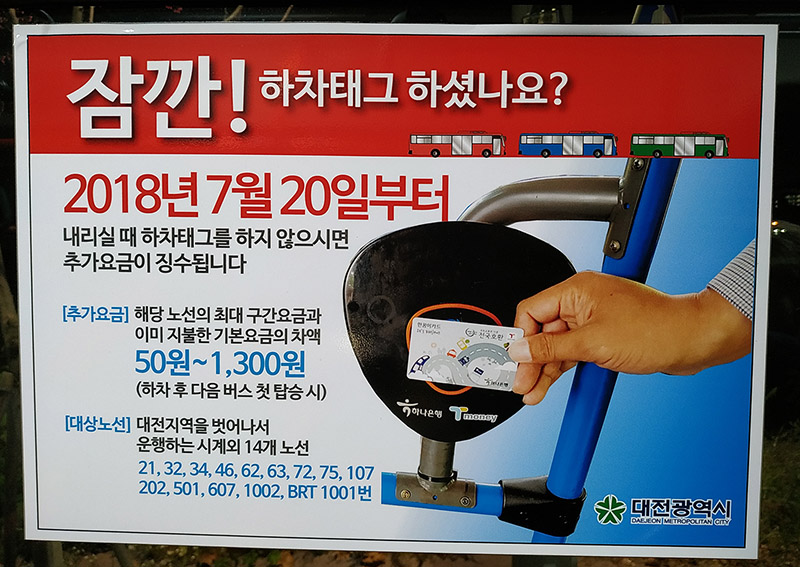
If you rode a bus with two steps, you’ll need to go down two steps to exit. Here is a typical exit for these buses and there are two transport card scanners. When the transport card system was first setup, there was usually one card scanner which ended up creating a bottleneck for exit passengers. Now it is more common to see two scanners.
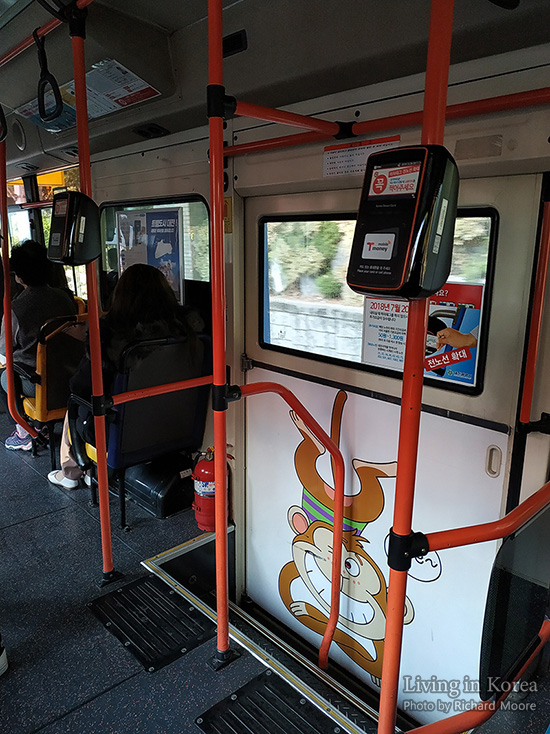
Here is another angle to better show the steps leading down. The floor has a different texture to protect against slipping during the summer rains and winter snow and ice. If needed, please keep a good grip on the poles while you exit. Barely visible here is a small red dot in a rectangle. This dot is actually a beam that is broken when someone is still trying to exit which acts as a safety device that prohibits the door from closing when someone has not fully exited yet. If the driver attempts to close the door too early there will be a buzzer sound and the door will reopen itself.
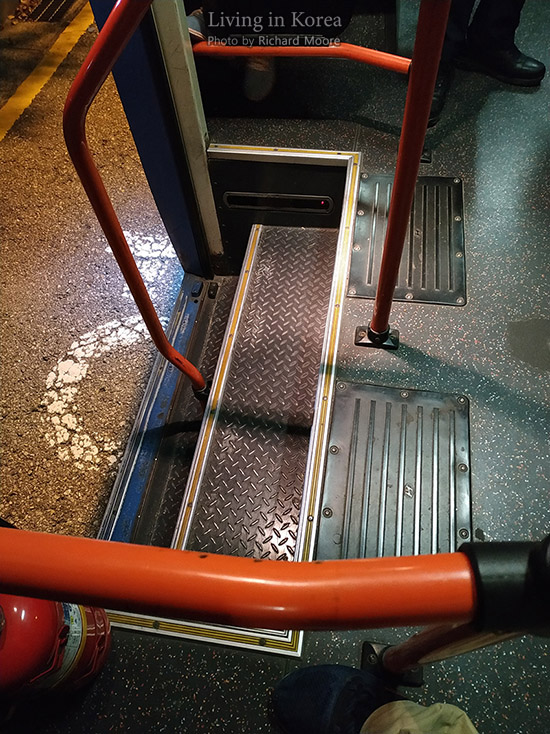
Here we can better see the rectangle that holds these sensors.
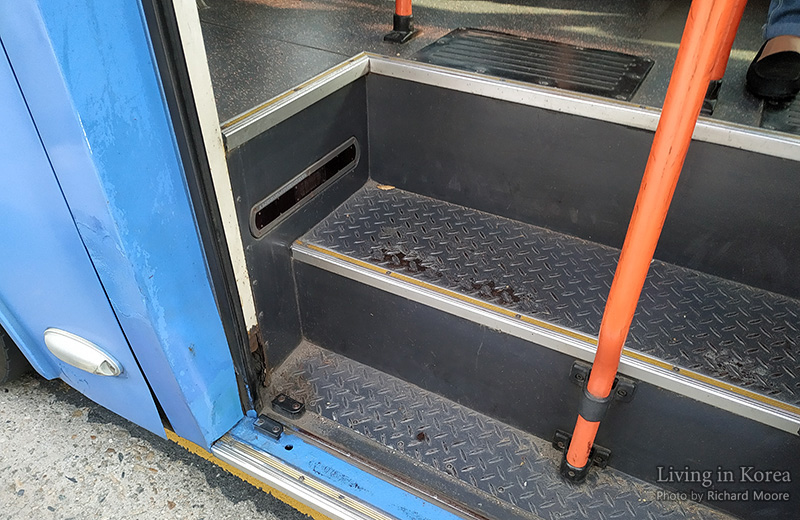
Buses with steps have a door that slides into the wall. Low floor buses have doors that swing in, which means they could bump into people. In order to let people know where the doors will swing, and in order to make sure they don’t stand where the doors will swing, bus operators installed yellow or orange plastic chain connected to the doors and the poles near the doors. This simple system is quite effective.
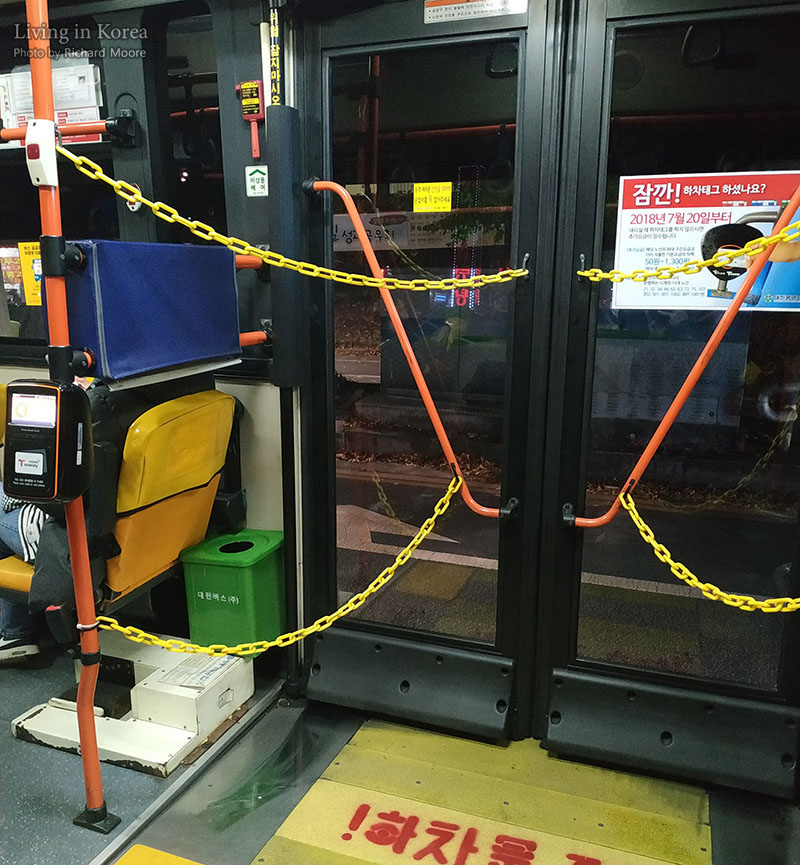
These buses have a slight slope to make wheelchairs easier to roll out of the bus. While the slope is slight, still be careful not to trip as it is not fully flush with the floor.
